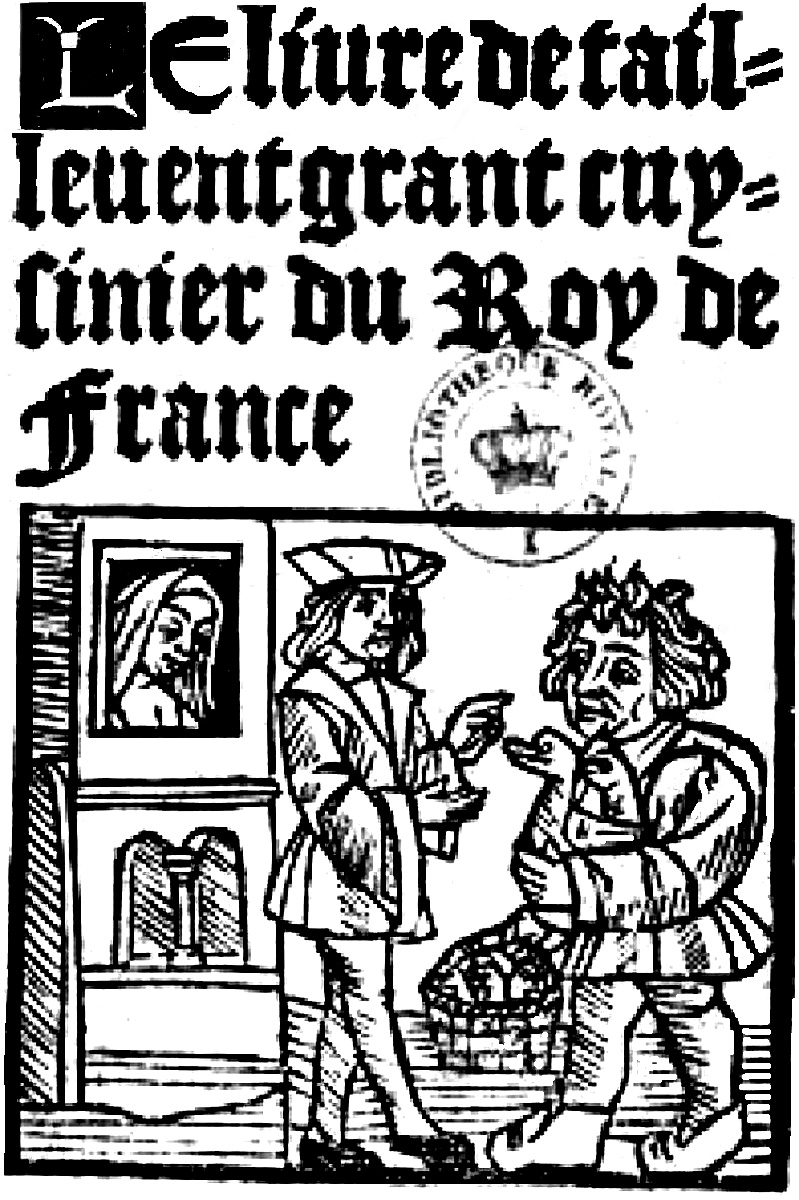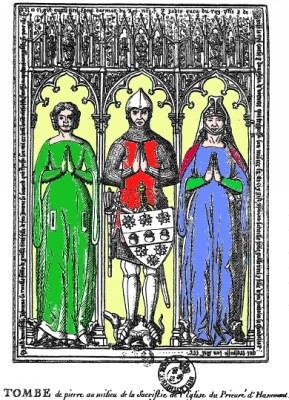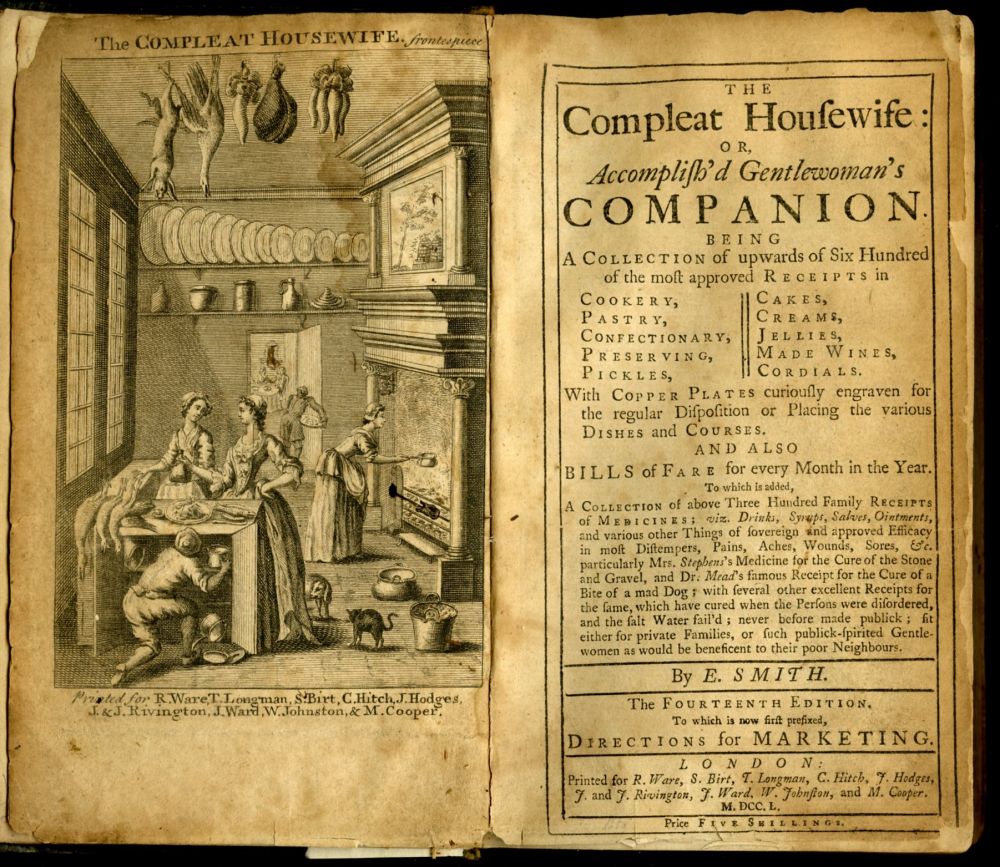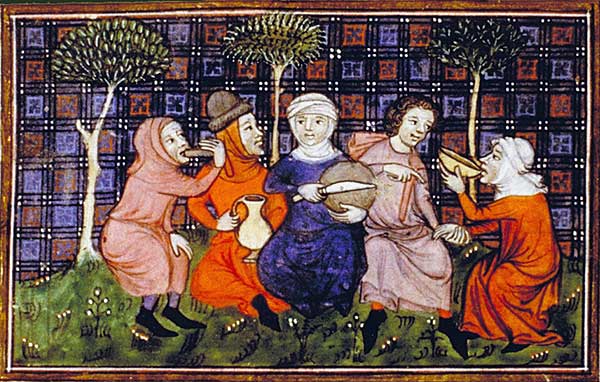|
Viandier
''Le Viandier'' (often called ''Le Viandier de Taillevent'', ) is a recipe collection generally credited to Guillaume Tirel, alias ''Taillevent''. However, the earliest version of the work was written around 1300, about 10 years before Tirel's birth. The original author is unknown, but it was common for medieval recipe collections to be plagiarized, complemented with additional material and presented as the work of later authors. ''Le Viandier'' is one of the earliest and best-known recipe collections of the Middle Ages, along with the Latin-language ''Liber de Coquina'' (early 14th century, believed to contain recipes from France and Italy) and the English ''The Forme of Cury'' (c. 1390). Among other things, it contains the first detailed description of an entremet. Manuscripts There are four extant manuscripts of ''Le Viandier''.; Scully 1988 is the first edition to collate all four extant manuscripts; an English translation of the 220 recipes is included. The oldest, fou ... [...More Info...] [...Related Items...] OR: [Wikipedia] [Google] [Baidu] |
Guillaume Tirel
Guillaume Tirel, known as Taillevent (French: "wind-cutter" i.e. an idle swaggerer) (born ca. 1310 in Pont-Audemer – 1395), was an important figure in the early history of French cuisine. He was cook to the Court of France at the time of the first Valois kings and the Hundred Years' War. His first position was ''enfant de cuisine'' (kitchen boy) to Queen Jeanne d'Évreux. From 1326 he was '' queux'', head chef, to Philip VI. In 1347, he became squire to the Dauphin de Viennois and his ''queux'' in 1349. In 1355 he became squire to the Duke of Normandy, in 1359 his ''queux'' and in 1361 his serjeant-at-arms. The Duke of Normandy became Charles V in 1368 and Tirel continued in his service. From 1381 he was in service to Charles VI. Guillaume Tirel is generally considered one of the first truly "professional" master chefs. He died in 1395 at around 80 years of age. He expanded a collection of recipes as '' Le Viandier'', a famous book on cookery and cookery technique, thoug ... [...More Info...] [...Related Items...] OR: [Wikipedia] [Google] [Baidu] |
The Forme Of Cury
''The Forme of Cury'' (''The Method of Cooking'', from Middle French : 'to cook') is an extensive 14th-century collection of medieval English recipes. Although the original manuscript is lost, the text appears in nine manuscripts, the most famous in the form of a scroll with a headnote citing it as the work of "the chief Master Cooks of King Richard II". The name ''The Forme of Cury'' is generally used for the family of recipes rather than any single manuscript text. It is among the oldest extant English cookery books, and the earliest known to mention olive oil, gourds, and spices such as mace and cloves. Context The collection was named ''The Forme of Cury'' by Samuel Pegge, who published an edition of one of the manuscripts in 1780 for a trustee of the British Museum, Gustavus Brander. It is one of the best-known medieval guides to cooking. ''The Forme of Cury'' may have been written partly to compete with '' Le Viandier of Taillevent'', a French cookery b ... [...More Info...] [...Related Items...] OR: [Wikipedia] [Google] [Baidu] |
Cookbook
A cookbook or cookery book is a kitchen reference containing recipes. Cookbooks may be general, or may specialize in a particular cuisine or category of food. Recipes in cookbooks are organized in various ways: by course (appetizer, first course, main course, dessert), by main ingredient, by cooking technique, alphabetically, by region or country, and so on. They may include illustrations of finished dishes and preparation steps; discussions of cooking techniques, advice on kitchen equipment, ingredients, and substitutions; historical and cultural notes; and so on. Cookbooks may be written by individual authors, who may be chefs, cooking teachers, or other food writers; they may be written by collectives; or they may be anonymous. They may be addressed to home cooks, to professional restaurant cooks, to institutional cooks, or to more specialized audiences. Some cookbooks are didactic, with detailed recipes addressed to beginners or people learning to cook particular dishes o ... [...More Info...] [...Related Items...] OR: [Wikipedia] [Google] [Baidu] |
Medieval Cuisine
Medieval cuisine includes foods, eating habits, and cooking methods of various European cultures during the Middle Ages, which lasted from the fifth to the fifteenth century. During this period, diets and cooking changed less than they did in the early modern period that followed, when those changes helped lay the foundations for modern European cuisine. Cereals remained the most important staple during the Early Middle Ages as rice was introduced late, and the potato was only introduced in 1536, with a much later date for widespread consumption. Barley, oats, and rye were eaten by the poor. Wheat was for the governing classes. These were consumed as bread, porridge, gruel, and pasta by all of society's members. Cheese, fruits, and vegetables were important supplements to the cereal-based diet of the lower orders. Meat was more expensive and therefore more prestigious. Game, a form of meat acquired from hunting, was common only on the nobility's tables. The most pr ... [...More Info...] [...Related Items...] OR: [Wikipedia] [Google] [Baidu] |
Entremet
An entremet or entremets (; ; from Old French, literally meaning "between servings") in French cuisine historically referred to small dishes served between courses but in modern times more commonly refers to a type of dessert. By the end of the Middle Ages, it had evolved almost entirely into dinner entertainment in the form of inedible ornaments or acted performances, often packed with symbolism of power and regality. In English it was more commonly known as a subtlety (also ''sotelty'' or ''soteltie'') and did not include acted entertainment, but most famously did have live blackbirds flying out of a pie, a scene immortalized in the folk song " Sing a Song of Sixpence". Originally an elaborate form of entertainment dish during the Late Middle Ages and the early modern period, an ''entremet'' marked the end of a course and could be anything from a simple frumenty (a type of wheat porridge) that was brightly colored and flavored with exotic and expensive spices, to elaborate mo ... [...More Info...] [...Related Items...] OR: [Wikipedia] [Google] [Baidu] |
Apicius
''Apicius'', also known as ''De re culinaria'' or ''De re coquinaria'' (''On the Subject of Cooking'') is a collection of Roman cookery recipes. It is thought to have been compiled in the fifth century AD. Its language is in many ways closer to Vulgar than to Classical Latin, with later recipes using Vulgar Latin (such as ''ficatum'', ''bullire'') added to earlier recipes using Classical Latin (such as ''iecur'', ''fervere''). The book has been attributed to an otherwise unknown Caelius Apicius, an invention based on the fact that one of the two manuscripts is headed with the words "API CAE" or rather because a few recipes are attributed to Apicius in the text: Patinam Apicianam sic facies (IV, 14) Ofellas Apicianas (VII, 2). It has also been attributed to Marcus Gavius Apicius, a Roman gourmet who lived sometime in the 1st century AD during the reign of Tiberius. The book also may have been authored by a number of different Roman cooks from the first century AD. Based on ... [...More Info...] [...Related Items...] OR: [Wikipedia] [Google] [Baidu] |
Liber De Coquina
The ''Liber de Coquina'' ("The book of cooking/cookery") is one of the oldest medieval cookbooks. Two codices that contain the work survive from the beginning of the 14th century. Both are preserved at the Bibliothèque Nationale in Paris, France. Description The text consists of two independent parts, mostly cited as ''Tractatus'' (part 1) and ''Liber de Coquina'' (part 2). The titles are taken from marginal notes by the medieval editor. While the identity of both the authors is unknown, it is believed that the ''Tractatus'' was originally written by a French author and the ''Liber de Coquina'' by an Italian author from the Naples area. Contents Tractatus (part 1) *wine compositions *poultry and meat *fish *dishes for the rich *legumes, eggs, leeks and gravy Liber de Coquina (part 2) *vegetables *poultry *pastry *fish *compositions of many ingredients Text Manuscripts Latin manuscript 7131 fol. 94r-99v, Bibliothèque nationale, Paris (ca. 1304-1314)Latin manuscript ... [...More Info...] [...Related Items...] OR: [Wikipedia] [Google] [Baidu] |
Georges Vicaire
Georges Vicaire (8 December 1853 – 4 November 1921) was a French bibliophile and bibliographer. The son of (1802-1865), General Director of forests, and Marthe Vicaire Blais, Georges Vicaire was the father of Jean Vicaire and (1893–1976), an orientalist painter. Biography Georges Vicaire was responsible for special work on the preparation of the printed catalogs of the Bibliothèque de l'Arsenal, then was attached to the Bibliothèque Mazarine. In 1909, the Institut de France appointed curator of the , created by and located in Chantilly, next to the Musée Condé, which houses the very large Library of Henri d'Orléans, Duke of Aumale. He was also correspondent to the Vatican Library. He had hence access to funds from both institutions. Vicaire is the author of bibliographies of Honoré de Balzac, José-Maria de Heredia, George Sand, Stendhal, Victor Hugo and gastronomic literature and a very important work in 8 volumes on the literature of the nineteenth century''L ... [...More Info...] [...Related Items...] OR: [Wikipedia] [Google] [Baidu] |
Jérôme Pichon
Baron Jérome-Frédéric Pichon (3 December 1812 – 26 August 1896) was a 19th-century French bibliographer and bibliophile. He was one of the most important French art collectors of his time. Biography Jérôme Pichon was the second son of Alexandrine Émilie Brongniart (1780–1847), whose father was the architect Alexandre-Théodore Brongniart, and of Baron Louis-André Pichon. After a brief stay at the École de Saint-Cyr, he studied law and was then appointed an auditor at the Conseil d’État before withdrawing completely from public life in 1846. He was also Consul General to Smyrna. He began his collection of old books in 1831 and soon became indebted to booksellers for 6,000 francs, a sum that his father reimbursed without difficulty: the young man's love of books had turned into a devouring passion, which was to remain with him. He also collected numerous antique objects of various natures (archaeology, numismatics, prints, silversmiths, etc.), including a ra ... [...More Info...] [...Related Items...] OR: [Wikipedia] [Google] [Baidu] |
14th-century Books
As a means of recording the passage of time, the 14th century was a century lasting from 1 January 1301 ( MCCCI), to 31 December 1400 ( MCD). It is estimated that the century witnessed the death of more than 45 million lives from political and natural disasters in both Europe and the Mongol Empire. West Africa experienced economic growth and prosperity. In Europe, the Black Death claimed 25 million lives wiping out one third of the European population while the Kingdom of England and the Kingdom of France fought in the protracted Hundred Years' War after the death of Charles IV, King of France led to a claim to the French throne by Edward III, King of England. This period is considered the height of chivalry and marks the beginning of strong separate identities for both England and France as well as the foundation of the Italian Renaissance and Ottoman Empire. In Asia, Tamerlane (Timur), established the Timurid Empire, history's third largest empire to have been eve ... [...More Info...] [...Related Items...] OR: [Wikipedia] [Google] [Baidu] |
Printing Press
A printing press is a mechanical device for applying pressure to an inked surface resting upon a print medium (such as paper or cloth), thereby transferring the ink. It marked a dramatic improvement on earlier printing methods in which the cloth, paper or other medium was brushed or rubbed repeatedly to achieve the transfer of ink, and accelerated the process. Typically used for texts, the invention and global spread of the printing press was one of the most influential events in the second millennium. In Germany, around 1440, goldsmith Johannes Gutenberg invented the movable-type printing press, which started the Printing Revolution. Modelled on the design of existing screw presses, a single Renaissance movable-type printing press could produce up to 3,600 pages per workday, compared to forty by hand-printing and a few by hand-copying. Gutenberg's newly devised hand mould made possible the precise and rapid creation of metal movable type in large quantities. His tw ... [...More Info...] [...Related Items...] OR: [Wikipedia] [Google] [Baidu] |








